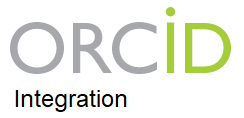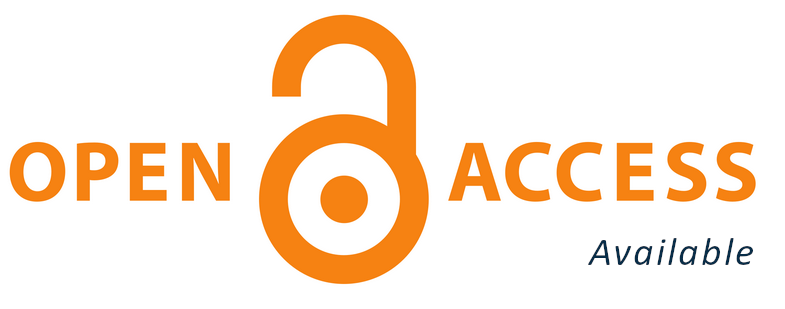Reacción al estrés agudo y el síndrome burn out en el personal del centro de salud de Santa Ana. Panamá.

Autores/as
DOI:
https://doi.org/10.37980/im.journal.rmdp.20221949Palabras clave:
reacción al estrés agudo, síndrome de desgaste, síntomas, centro de saludResumen
Introducción: la reacción al estrés agudo y síndrome burn out (SB) se diferencian: el primero es consecuencia de un estrés físico o psicológico excepcional y el segundo es consecuencia al estrés laboral; pero ambos comparten síntomas de tipo depresivo, ansiedad y somáticos. Objetivo: Evaluar las características clínicas y epidemiológicas con relación al trastorno por reacción al estrés agudo y síndrome burnout. Metodología: Estudio clínico Descriptivo y Transversal. Se analizaron 55 personas del centro de salud, se utilizaron 5 cuestionarios: Maslach Burnout Inventory (MBI), de estrés percibido (PSQ), sobre la salud del paciente-9 (PHQ-9), para trastorno de ansiedad generalizada (GAD-7) y sobre la salud del paciente-15 (PHQ-15). Los datos fueron analizados con el programa EPI INFO 7 utilizando descripciones de frecuencia, porcentaje, cruce de variables y pruebas de significancia estadísticas. Resultados: Se obtuvo una prevalencia del 5.4% SB, síntomas SB 25.4% y según las subescalas del SB se obtuvo CE (cansancio emocional) 14.5%, DE (despersonalización)18.1% y RP (realización personal) 18.1%. Hubo una relación positiva de CE, PSQ (0 – 0.49) y síntomas de ansiedad según GAD-7 (3%) (P=0.003), por el cual, posible hay un 5.4% con reacción al estrés agudo. Conclusiones: La prevalencia del personal del CS para SB fue de 5.4%, síntomas SB 25.4% y según las subescalas del SB se obtuvo CE 14.5%, DE 18.1% y RP 18.1%. Así mismo se encontró una relación significativa CE, PSQ (0 – 0.49) y síntomas de ansiedad según GAD-7 (3%) (P=0.003), por el cual, hay un posible 5.4% con reacción al estrés agudo.
Introduction: Acute stress reaction and burnout syndrome (BS) are different: the former is a consequence of exceptional physical or psychological stress and the latter is a consequence of occupational stress; but both share depressive, anxiety and somatic symptoms. Objective: To evaluate the clinical and epidemiological characteristics of acute stress reaction disorder and burnout syndrome. Methodology: Descriptive and cross-sectional clinical study. A total of 55 people from the health center were analyzed, 5 questionnaires were used: Maslach Burnout Inventory (MBI), perceived stress (PSQ), patient health questionnaire-9 (PHQ-9), generalized anxiety disorder (GAD-7) and patient health questionnaire-15 (PHQ-15). The data were analyzed with the EPI INFO 7 program using descriptions of frequency, percentage, crossing of variables and statistical significance tests. Results: There was a prevalence of 5.4% SB, SB symptoms 25.4% and according to the subscales of SB there was CE (emotional exhaustion) 14.5%, DE (depersonalization) 18.1% and RP (personal fulfillment) 18.1%. There was a positive relationship of CE, PSQ (0 - 0.49) and anxiety symptoms according to GAD-7 (3%) (P=0.003), whereby, possible there is 5.4% with acute stress reaction. Conclusions: The prevalence of CS personnel for SB was 5.4%, SB symptoms 25.4% and according to SB subscales CE 14.5%, DE 18.1% and RP 18.1% were obtained. Likewise, a significant relationship was found between CE, PSQ (0 - 0.49) and anxiety symptoms according to GAD-7 (3%) (P=0.003), whereby, there is a possible 5.4% with acute stress reaction.
Referencias
Espinosa, J. et Al., (2020). Influencia del estrés sobre el rendimiento académico. Archivos Venezolanos de Farmacología y Terapéutica, 39, 63–69. https://biblat.unam.mx/hevila/Archivosvenezolanosdefarmacologiayterapeutica/2020/vol39/no1/14.pdf
REYNALDO ALONSO, GAETA (2003). El estrés Metodología de la investigación. Direccion:https://www.monografias.com/trabajos14/estres/estres.shtml#ANTECED,2003.
Acosta, C. A. P., & Obando, A. C. T. (2018). Fundamentos de medicina: psiquiatría, EN: Capítulo 19. Estrés y trastorno de estrés postraumático. Ecoe Ediciones.
Lee, E.-H. (2012). Review of the Psychometric Evidence of the Perceived Stress Scale. Asian Nursing Research, 6(4), 121-127. https://doi.org/10.1016/j.anr.2012.08.004
Lempert, K. M., McGuire, J. T., Hazeltine, D. B., Phelps, E. A., & Kable, J. W. (2018). The effects of acute stress on the calibration of persistence. Neurobiology of Stress, 8, 1–9. https://doi.org/10.1016/j.ynstr.2017.11.001
Godoy, L. D., Rossignoli, M. T., Delfino-Pereira, P., Garcia-Cairasco, N., & de Lima Umeoka, E. H. (2018). A Comprehensive Overview on Stress Neurobiology: Basic Concepts and Clinical Implications. Frontiers in Behavioral Neuroscience, 12, 1–23. https://doi.org/10.3389/fnbeh.2018.00127
Xin, Y., Wu, J., Yao, Z., Guan, Q., Alemán, A., & Luo, Y. (2017). The relationship between personality and the response to acute psychological stress. Scientific Reports, 7(1). https:// doi.org/10.1038/s41598-017-17053
Bryant, R.A. The Current Evidence for Acute Stress Disorder. Curr Psychiatry Rep 20, 111 (2018). https://doi.org/10.1007/s11920-018-0976-x
Bryant, R. (2018, 14 diciembre). Treatment of acute stress disorder in adults. UpToDate. https://www.uptodate.com/contents/treatment-of-acute-stress-disorder-in-adults
Koutsimani, P., Montgomery, A., & Georganta, K. (2019). The Relationship Between Burnout, Depression, and Anxiety: A Systematic Review and Meta-Analysis. Frontiers in Psychology, 10, 1–9. https://doi.org/10.3389/fpsyg.2019.00284
Chow, Y., Masiak, J., Mikołajewska, E., Mikołajewski, D., Wójcik, G. M., Wallace, B., Eugene, A., & Olajossy, M. (2018). Limbic brain structures and burnout—A systematic review. Advances in Medical Sciences, 63(1), 192–198. https://doi.org/10.1016/j.advms.2017.11.004
Cadavid Buitrago (2016). Una aproximación exploratoria al estudio síndrome de burn out y su relación con la personalidad(Tesis de especialización).Universidad de Antioquia, Colombia.
Ochentel, O., Humphrey, C., & Pfeifer, K. (2018). Efficacy of Exercise Therapy in Persons with Burnout. A Systematic Review and Meta-Analysis. Journal of Sports Science and Medicine, 17, 475–484. http://www.jssm.org
Organización mundial de la salud. (1994). GUÍA DE BOLSILLO DE LA CLASIFICACIÓN CIE-1O Clasificación de los trastornos mentales y del comportamiento. Editorial Médica Panamericana.
Black, D. W., Andreasen, N. C., & Morales, J. L. (2015). Texto introductorio de Psiquiatría - DSM-5 edición (1.a ed.). Editorial El Manual Moderno.
Morales, L., & Hidalgo, L. (2015). SÍNDROME DE BURNOUT. Medicina Legal de Costa Rica - Edición Virtual, 32(1), 1–6. https://www.scielo.sa.cr/scielo.php?script=sci_arttext&pid=S1409-00152015000100014
Organización mundial de la Salud(OMS). (2018, 18 junio). La Organización Mundial de la Salud (OMS) publica hoy su nueva Clasificación Internacional de Enfermedades (CIE-11). Organización mundial de la Salud. https://www.who.int/es/news/item/17-06-2018-who-releases-new-international-classification-of-diseases-(icd- 11)#:%7E:text=La%20CIE%2D11%20se%20presentar%C3%A1,1%20de%20enero%20de%202022.
organización mundial de la salud. (s. f.). CIE-11 - Estadísticas de morbilidad y mortalidad. Recuperado de https://icd.who.int/browse11/l-m/es#/http://id.who.int/icd/entity/129180281
Wersebe, H., Lieb, R., Meyer, A. H., Hofer, P., & Gloster, A. T. (2018). The link between stress, well-being, and psychological flexibility during an Acceptance and Commitment Therapy self-help intervention. International Journal of Clinical and Health Psychology, 18(1), 60–68.
Rosenstein, L. S., Torre, M., Ramos, M. A., Rosales, R. C., Guille, C., Sen, S., & Mata, D. A. (2018). Prevalence of Burnout Among Physicians. JAMA, 320(11), 1131.
Ortega, Christian., Salas, Roberto., Correa, Ricardo.(2011) Aspectos epidemiológicos del síndrome de burnout en el personal sanitario. Hospital aquilino Tejeira. Febrero-marzo 2011
Protocolos - Minsa [Conjunto de datos] . (2018, 14 diciembre). Recuperado 23 julio, 2019, de http://www.minsa.gob.pa/sites/default/files/publicacion-general/registro_protocolos_version_web_minsa_2018_no_editable.xls.
Salvagioni, D. A. J., Melanda, F. N., Mesas, A. E., González, A. D., Gabani, F. L., & Andrade, S. M. (2017). Physical, psychological and occupational consequences of job burnout: A systematic review of prospective studies. PLOS ONE, 12(10), 1–29.
Gradus, J. (2017). Prevalence and prognosis of stress disorders: a review of the epidemiologic literature. Clinical Epidemiology, Volume 9, 251–260. https://doi.org/10.2147/clep.s106250
Wilkinson, H., Whittington, R., Perry, L., & Eames, C. (2017). Examining the relationship between burnout and empathy in healthcare professionals: A systematic review. Burnout Research, 6, 18–29. https://doi.org/10.1016/j.burn.2017.06.003
Craiovan, P. M. (2014). Correlations between Perfectionism, Stress, Psychopathological Symptoms and Burnout in the Medical Field. Procedia - Social and Behavioral Sciences, 127, 529–533.
Bryant, R. A., Creamer, M., O’Donnell, M., Forbes, D., McFarlane, A. C., Silove, D., & Hadzi-Pavlovic, D. (2017). Acute and Chronic Posttraumatic Stress Symptoms in the Emergence of Posttraumatic Stress Disorder. JAMA Psychiatry, 74(2), 135.
Chida, Y., & Steptoe, A. (2010). Greater Cardiovascular Responses to Laboratory Mental Stress Are Associated With Poor Subsequent Cardiovascular Risk Status. Hypertension, 55(4), 1026–1032
Childs, E., White, T. L., & De Wit, H. (2014). Personality traits modulate emotional and physiological responses to stress. Behavioural Pharmacology, 1.
Lall, M., Gaeta, T., Chung, A., Dehon, E., Malcolm, W., Ross, A.,Way,D., Weichenthal,L., Himelfarb, N. (2019). Assessment of Physician Well-being, Part One: Burnout and Other Negative States. Western Journal of Emergency Medicine, 20(2), 278-290.
Shahid, A., Wilkinson ,K.,Marcus,. et al. ,STOP, THAT and One Hundred Other Sleep Scales, DOI 10.1007/978-1-4419-9893-4_64, Springer Science Business Media, LLC 2012
Beard, C., Hsu, K. J., Rifkin, L. S., Busch, A. B., & Björgvinsson, T. (2016). Validation of the PHQ-9 in a psychiatric sample. Journal of Affective Disorders, 193, 267-273. https://doi.org/10.1016/j.jad.2015.12.075
Njim, T., Mbanga, C. M., Tindong, M., Fonkou, S., Makebe, H., Toukam, L., Fondungallah,J., Mulango,I., Kika, B. (2019). Burnout as a correlate of depression among medical students in Cameroon: a cross-sectional study. BMJ Open, 9(5), e027709. https://doi.org/10.1136/bmjopen-2018-027709
Liao, S.-C., Huang, W.-L., Ma, H.-M., Lee, M.-T., Chen, T.-T., Chen, I.-M., & Gau, S. S.-F. (2016). The relation between the patient health questionnaire-15 and DSM somatic diagnoses. BMC Psychiatry, 16(1). https://doi.org/10.1186/s12888-016-1068-2
Schneider A, Hilbert S, Hamann J, Skadsem S, Glaser J, Lowe B, Buhner M:The implications of psychological symptoms for length of sick leave—burnout, depression, and anxiety as predictors in a primary care setting’s Arztebl Int 2017; 114: 291–7. DOI: 10.3238/arztebl.2017.0291
Morgan, B., & de Bruin, K. (2010). The Relationship between the Big Five Personality Traits and Burnout in South African University Students. South African Journal of Psychology, 40(2), 182–191. https://doi.org/10.1177/008124631004000208
Barrett, J., Eason, C. M., Lazar, R., & Mazerolle, S. M. (2016). Personality Traits and Burnout Among Athletic Trainers Employed in the Collegiate Setting. Journal of Athletic Training, 51(6), 454–459. https://doi.org/10.4085/1062-6050-51.7.08
John, O. P., & Srivastava, S. (1999). The Big-Five trait taxonomy: History, measurement, and theoretical perspectives. In L. A. Pervin & O. P. John (Eds.), Handbook of personality: Theory and research (Vol. 2, pp. 102–138). New York: Guilford Press.
Factores involucrados en la reacción a la adaptación del estrés. Read, A. (2012). Resumen sobre el estrés[Diapositivas] .
enviar
suscripperonal
Información
Idioma





